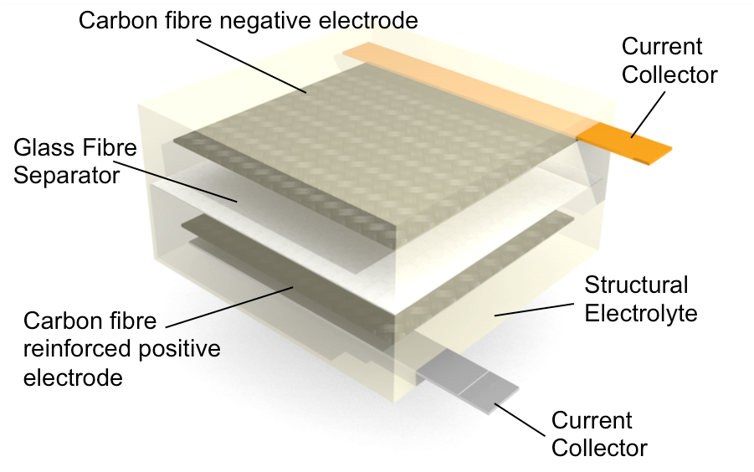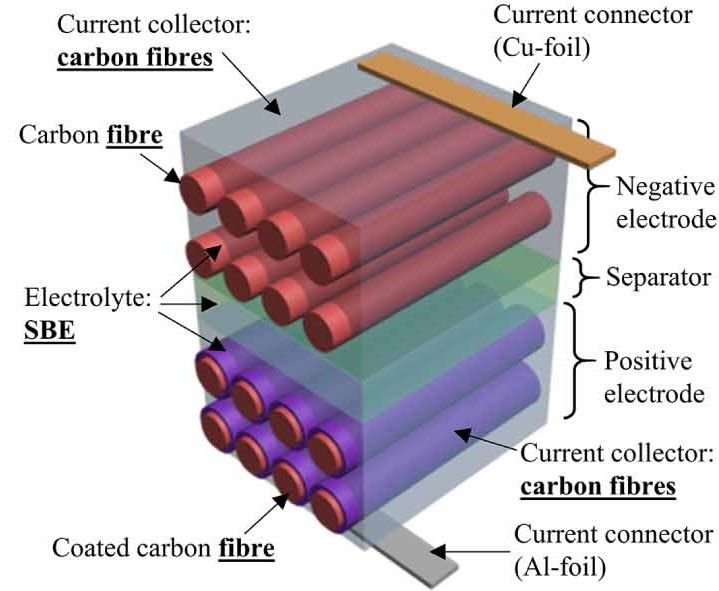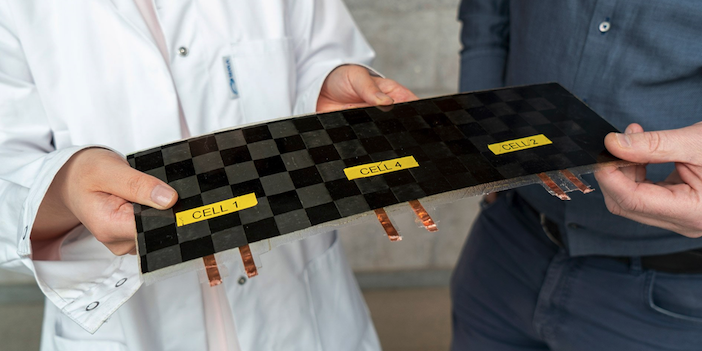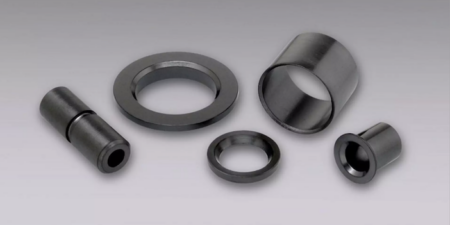Many companies in the aviation sector are working towards achieving net-zero carbon emissions by 2050 through the use of battery power, but there is a major engineering hurdle to overcome: weight. Batteries are heavy, and light weight is essential for passenger aircraft efficiency. Indeed, light weight is important for other transport applications such as road vehicles, in which reducing weight reduces the power required to move the vehicle, extending the driving range per battery charge.
A potential solution is being developed: a unique carbon fibre material that can store electrical energy, enabling energy storage in existing structures for a variety of industries – from aircraft to electric cars. In essence, the material could provide both energy storage and a load-bearing function – creating a ‘structural battery’, with the dual function offsetting its own weight.
The material has been developed by Sinonus, a spinoff company established by Chalmers University of Technology in Gothenburg, Sweden and the KTH university in Stockholm, Sweden, which is part of the Chalmers Ventures portfolio. Sinonus’ new CEO, Markus Zetterström, will be focusing on commercialising the technology of carbon fibres that double as battery electrodes.
Carbon fibre is a strong and lightweight construction material that can store energy electrochemically. Sinonus is using this multi-functionality to make true carbon fibre-based structural batteries that not only store energy but also become an integral part of the product’s structure. If it becomes a production reality, this patented innovation could represent a significant step forward in streamlining batteries and broadening their potential applications.
Sinonus says it has already demonstrated the potential of its technology by replacing AAA batteries in low-power products in its lab. The goal is to expand the technology to larger applications such as IoT devices, and eventually extend it to drones, computers, larger vehicles, and ultimately airplanes.

The carbon fibre technology being developed by Sinonus originates from Oxeon, another Chalmers Venture portfolio company. Oxeon carbon fibre was used in the propeller blades for NASA’s autonomous Ingenuity helicopter, which completed the first powered, controlled flight on Mars on 18th January 2024 – the material was chosen by the engineering team due to its ultra-light weight and thinness.
According to a study from Chalmers University of Technology, the introduction of carbon fibre-based structural batteries could increase the driving range for lightweight electric vehicles by 70%. In addition, the lower energy density of structural batteries would make them safer than standard batteries, especially as they would also not contain any volatile substances.
“Storing electrical energy in carbon fibre may perhaps not become as efficient as traditional batteries, but since our carbon fibre solution also has a structural load-bearing capability, very large gains can be made at a system level,” explained Zetterström.






